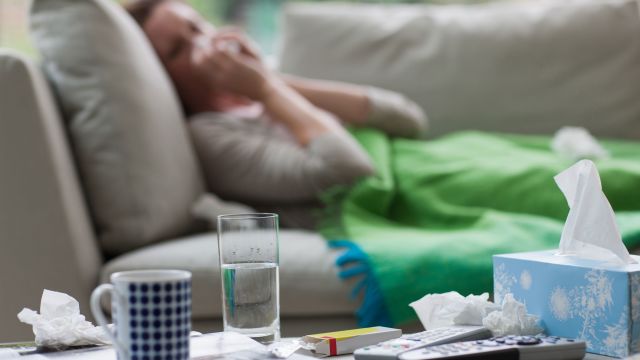Updated on November 22, 2022.
It’s no secret that the flu causes major illness and distress every year. According to the Centers for Disease Control and Prevention (CDC), health care visits from influenza run into millions each season—and the virus contributes to tens of thousands of deaths in the United States every year, as well.
Since you never know how severe the flu season will be in advance, it’s important to take steps to protect yourself and your loved ones. Here are some ways to cut down on germs to help keep your family well.
Wash your hands properly
Aside from getting the flu shot, one of the best forms of protection during cold and flu season is frequent hand washing. “We ask folks to wash their hands with soap and running water for at least 20 seconds, and to pay attention to under the fingernails and between the fingers, in the webs,” emphasizes Tung.
Apply effective hand sanitizer correctly
If you don’t have access to a sink and soap, the next best way to cleanse dirty hands is using a hand sanitizer that contains at least 60 percent alcohol, which is necessary to disinfect. “Again, we’re asking people to cover the entire surface of the hand—paying attention to under the nails and between the fingers—and most importantly to ensure that the product is fully dried,” states Tung. “There is something about the drying process of the disinfectant that actually kills off the germs. This is why you’ll often see doctors rub it all over their hands, and then wave their hands in the air in order to facilitate the drying process.”
Scrub shared items
Since the flu virus can remain “alive” for up to 24 hours on surfaces and objects, it’s wise to cleanse objects regularly touched by the coughing, sneezing, and shivering members of your household, including:
- Bath, kitchen, and hand towels
- Tables and desks
- Countertops
- Doorknobs and light switches
- Faucets
- Toilets, including handles
- Steering wheels and car door handles
Tung also recommends you wipe down shared digital equipment, such as keyboards, smartphones, and remote controls. "Disinfect any other items that are frequently handled or that may catch droplets of mucus and saliva, especially toys of young children,” she adds. And make sure not to share items like toothbrushes, cups and dishes.
The CDC says that typical cleaning products containing chlorine, hydrogen peroxide, detergents, iodophors (iodine-based antiseptics), and alcohols can destroy the virus.
Open the windows
If you're in close quarters with germy family members, you might want to let in some fresh air. One of the reasons people get sick more often during colder months may be extended periods of time spent indoors, combined with poor air circulation in the home or office, says Tung. So, if possible, aerate your living area. “Obviously, we don’t want to lower the temperature too much where people are shivering and then their immune system becomes compromised,” she adds.
Stop touching your face
Even though you may be diligent about keeping your hands clean, microorganisms and bacteria are, well, just about everywhere. Therefore, the CDC recommends making an effort to keep your hands away from your eyes, nose, and mouth as much as possible.
When you must be indoors with a loved one who is coming down with something, it may help to wear a well-fitting paper mask, like a KN95 or N95. And if you’re helping nurse someone in your home back to health, consider wearing disposable gloves when cleaning up their contaminated items in their area, such as tissues, towels, or body fluids.
Of course, taking measures like these against the flu can also help you steer clear of other respiratory infections lurking this time of year, such as the cold, respiratory syncytial virus (RSV), and COVID-19. And remember: The general principles of healthy living—staying well-hydrated, getting enough sleep, and eating a variety of foods that contain vitamins and minerals—should be followed when you have the flu and throughout the year, adds Tung.







